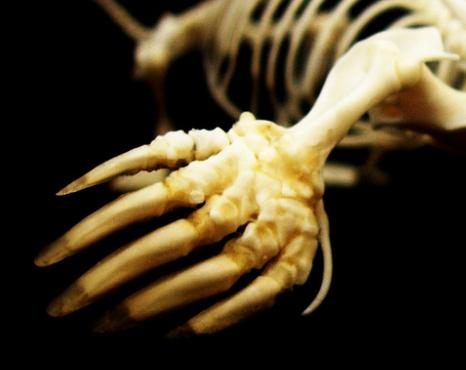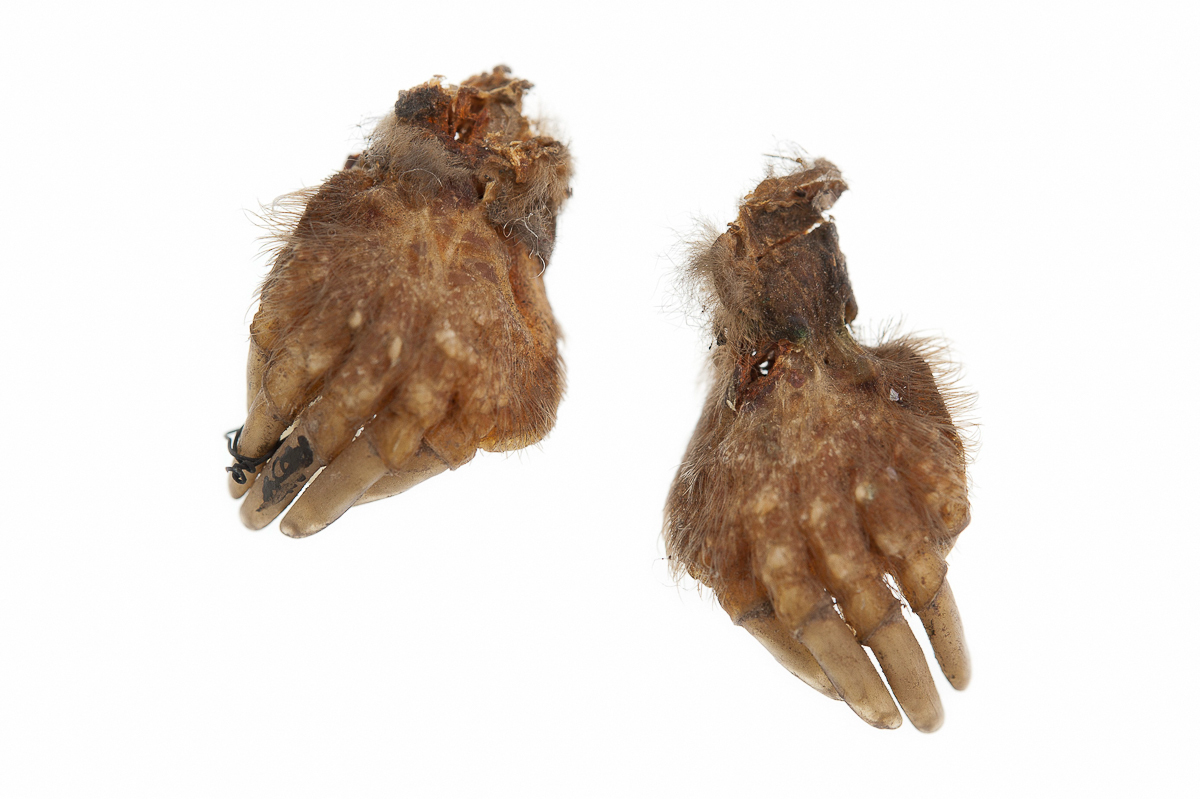A Fairy Foot? February 17, 2018
Author: Beach Combing | in : Modern , trackbackIn 1871 a man in a cattle market in Ipswich (England) watched a dealer remove, from his pocket, various objects and was shocked to see a small skeletal foot there. On being asked what the object was: the cattle dealer responded that it was a ‘fairy foot’ and that it was a ‘sovereign protection against rheumatism’. The idea of walking around with a fairy’s foot in your pocket may border on the bizarre, but apparently lots of individuals were doing just in this in the nineteenth century. Lementina, a gypsy woman, had a fairy foot that she kept in her skirt pouch and that made an impression on Francis Hindes Groome the author of Gipsy Tents (1880); a chance story from a Worcestershire newspaper records, meanwhile, the same tradition among English gipsies in 1890.
So what was the fairy’s foot? Well, the observant folklorist in the market in Ipswich knew enough to identify it as the skeletal remains of a mole’s foot: Groome could not identify it but Lementina revealed its secret to him: ‘‘A mole’s,’ she answered.’ It would be interesting to know whether or not this was solely a gypsy tradition or whether it was known elsewhere in the English countryside in the nineteenth century. Was the dealer at Ipswich perhaps a gypsy, as well? Note that there are some other traditions of using an animal’s foot against rheumatism. For example, in East Anglia a hare’s foot in the pocket was supposed to serve against pain.
Any other fairy’s feet: drbeachcombing gmail dot com
An old friend of this blog Neil H writes, 28 Feb 2017:
One of the many joys of the Pitt Rivers Museum in Oxford is that they have drawers of exhibits which you can open, a discovery in itself, to find moles feet collected from farm labourers, as well as the truly eclectic main collection of shrunken heads, guns, feathered cloaks and musical instruments (my favourite the mandolin painted with the Great War battles it was taken to).
See https://jarofmoles.wordpress.com/2014/11/30/mole-feet-amulets/
|
jarofmoles.wordpress.com
These two mole’s feet were carried in a pocket as an amulet to protect from toothache, collected in England (around 1933). They are part of the Pitt Rivers …
|
||
and
|
broughttolife.sciencemuseum.org.uk
The growing influence of biomedicine in the 1800s did not necessarily replace established forms of treatment based on belief and superstition.
|
and
|
www.horniman.ac.uk
The Horniman Museum and Gardens is a fascinating, family-friendly attraction in South London’s Forest Hill. We have collections of anthropology, musical …
|
and much much more on moles here . . .
|
www.alexandercummins.com
In which are considered the magics of the humble mole, beginning with the instruction of the Grimorium Verum to acquire the poor beast’s blood.
|
||





